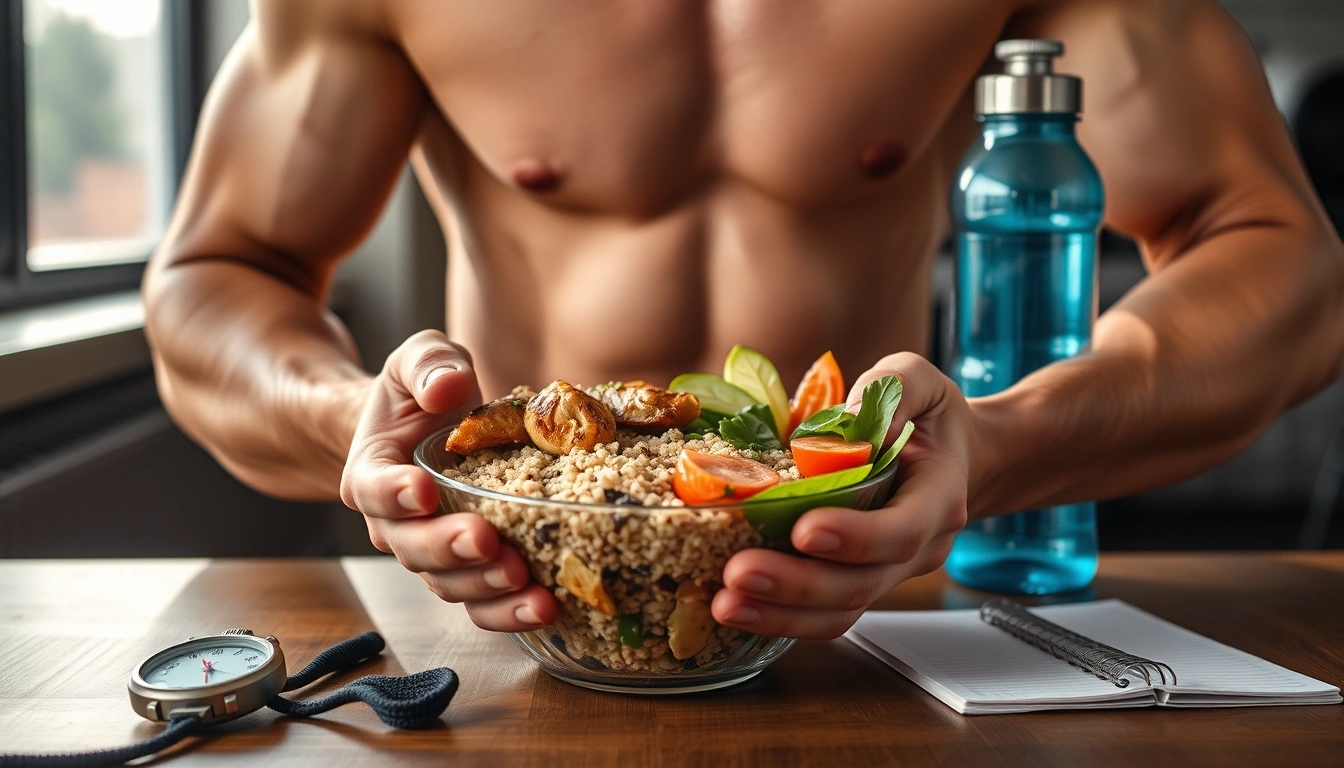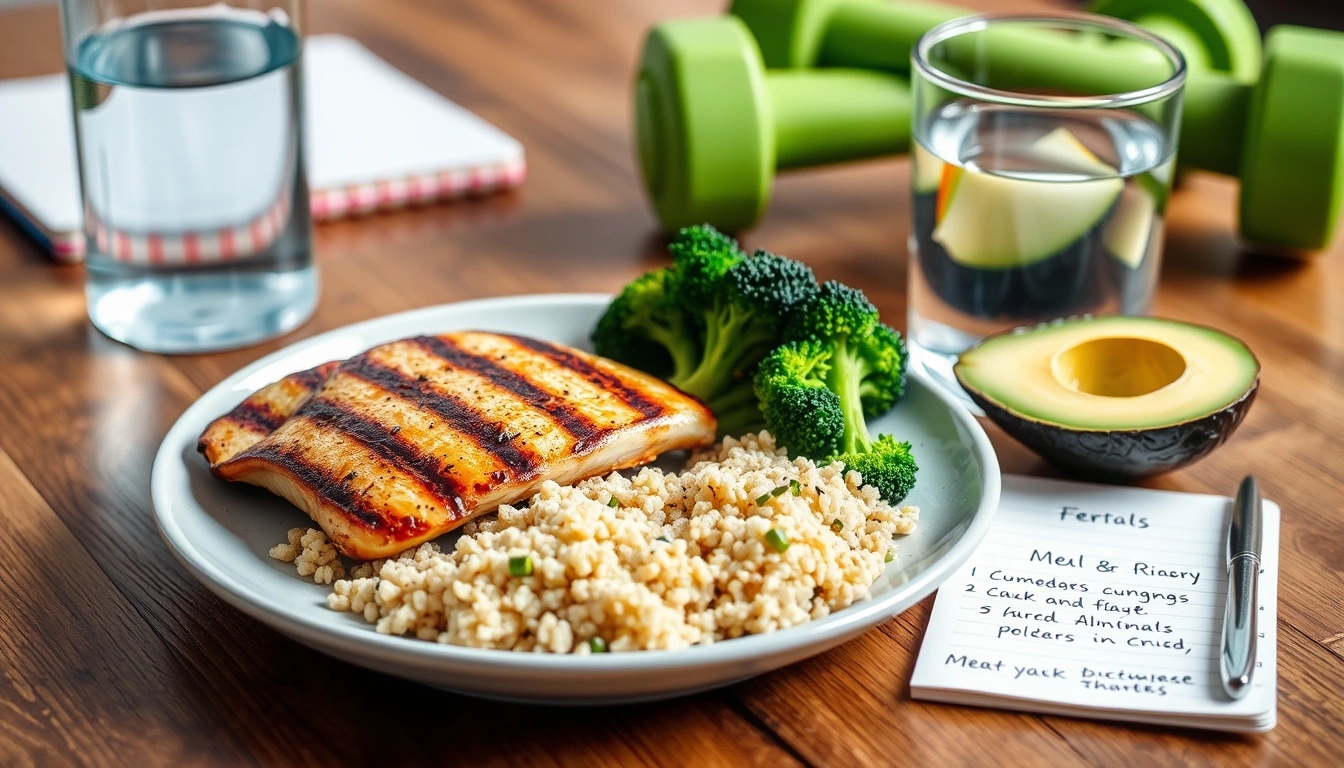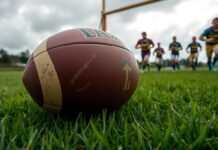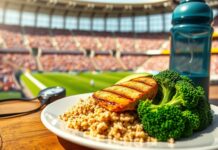Getting your nutrition spot on is honestly like winning half the battle when you’re a young athlete trying to bulk up without turning into a couch potato with extra padding. It’s not just about stuffing your face with protein shakes and chicken breasts — there’s a bit more finesse involved if you want to build lean muscle and not just add unwanted fat. So, buckle up, because we’re diving headfirst into the muscle-building menu and some no-nonsense tips to help you out.
Understanding Lean Muscle vs. Bulking
First off, let’s clear the air on what “lean muscle” actually means. It’s muscle tissue that’s dense, strong, and doesn’t come with a side of excess fat. Bulking, on the other hand, often gets a bad rap because people think it means eating everything in sight — burgers, fries, and ice cream included — to gain weight. Spoiler alert: that’s not the smartest move. Bulking smart means eating in a calorie surplus but with clean, nutrient-rich foods that help muscle growth and minimize fat gain.
| Lean Muscle | Traditional Bulking |
|---|---|
| Focus on muscle growth with minimal fat gain | Eat large calorie surplus, often with fat gain |
| Balanced macronutrients | High calorie, often unbalanced macros |
| Consistent training and recovery | Less emphasis on nutrition quality |
Macronutrients: The Muscle-Building Blocks
You’ve probably heard it a million times: protein, carbs, and fats are your best friends. But here’s the kicker — each of these plays a different role, and ignoring one is like trying to build a house with only bricks and no mortar.
- Protein: This is your muscle repair crew. After those grueling workouts, protein swoops in to fix and build muscle fibers. But not all proteins are created equal — lean meats, fish, dairy, and plant-based options like beans and lentils are solid picks.
- Carbohydrates: These guys are your fuel. Without carbs, your energy tanks fast, and your workouts suffer. But not all carbs are the same — go for complex carbs like sweet potatoes, oats, and whole grains instead of sugary junk.
- Fats: Don’t fear the fats! Healthy fats from nuts, seeds, and avocados support hormone production (hello, muscle growth) and keep your brain sharp.
Timing Your Meals: When to Eat for Maximum Gains
Here’s where things get a bit tricky. It’s not just what you eat but when you eat. Chowing down on protein and carbs right after training can turbocharge muscle repair and growth. Skipping meals or waiting too long makes your muscles feel like they’re on an empty stomach — no bueno.
| Meal Timing | Recommended Foods | Why It Matters |
|---|---|---|
| Pre-workout | Complex carbs + moderate protein | Fuel your workout energy |
| Post-workout | Protein + fast-digesting carbs | Muscle repair and glycogen replenishment |
| Throughout the day | Balanced meals with all macros | Steady muscle growth and energy |
Hydration and Supplements: The Unsung Heroes
Water is often the forgotten MVP. Dehydration can kill your performance and slow muscle recovery. Supplements? They’re not magic bullets but can help fill gaps — think whey protein, creatine, or a good multivitamin. Just don’t go overboard; more isn’t always better.
Common Mistakes Young Players Make in Muscle Building Diets
Skipping meals, eating too much junk, or relying solely on supplements instead of real food are rookie errors. Also, some young athletes think they need to eat nonstop or avoid fats entirely. Trust me, moderation and smart choices win the day.
Sample Meal Plan for Lean Muscle Gain
- Breakfast: Oatmeal with berries, nuts, and a scoop of protein powder
- Snack: Greek yogurt with honey and almonds
- Lunch: Grilled chicken breast, quinoa, and steamed veggies
- Snack: Apple slices with peanut butter
- Dinner: Salmon, sweet potato, and a side salad
- Post-workout: Protein shake with a banana
Tracking Progress and Adjusting Your Diet
Keep a close eye on your gains and how your body feels. If you’re putting on fat, dial back the calories a bit. Not gaining muscle? Maybe you need more protein or better meal timing. It’s a constant tweak game — nothing set in stone.
So, there you have it. Building lean muscle isn’t rocket science, but it does take some patience, planning, and a bit of trial and error. Eat smart, train hard, and don’t forget to hydrate — your muscles will thank you later.
Understanding Lean Muscle vs. Bulking
Alright, before you go on a full-on food frenzy thinking you’ll magically turn into a muscle beast overnight, let’s pump the brakes and get something straight about lean muscle and bulking. It’s not just about stuffing your face with every calorie-rich snack you can find. Nope, bulking isn’t a free pass to demolish a family-size pizza and call it “muscle-building.” There’s a method to the madness, and understanding the difference between lean muscle gain and just getting fat is key.
So, what exactly is lean muscle? Think of it as the kind of muscle that looks defined, feels strong, and doesn’t come with a side of extra body fat. It’s the muscle you’re proud to show off, not the one hidden under layers of fluff. Building lean muscle means you’re adding quality mass — actual muscle fibers — without going overboard on fat. It’s a bit like upgrading your car engine without junking the whole vehicle.
Now, bulking gets a bad rap because people often confuse it with “eating everything in sight.” But bulking, in the right sense, is about creating a calorie surplus that’s controlled and smart. You want to eat enough to fuel muscle growth but not so much that you’re storing half of it as fat. It’s a delicate dance, and yeah, it can be frustrating because the line between “bulking” and “getting chubby” is razor-thin.
- Lean Muscle Gain: Slow and steady, focusing on nutrient-dense foods and consistent training.
- Bulking: Intentional calorie surplus, but requires monitoring to avoid excessive fat gain.
- Dirty Bulking: Eating anything and everything without care — not recommended unless you want extra fat.
Here’s a quick table to clear things up:
| Aspect | Lean Muscle Gain | Bulking | Dirty Bulking |
|---|---|---|---|
| Calorie Intake | Moderate surplus | Higher surplus | Excessive surplus |
| Food Quality | Clean, nutrient-rich | Mostly clean but more flexible | Anything goes |
| Fat Gain | Minimal | Some fat gain expected | Significant fat gain |
| Muscle Gain Rate | Slower, more sustainable | Faster but less clean | Fast but messy |
Look, if you’re a young player trying to bulk up, the temptation to just eat everything in sight is real. But here’s the kicker: piling on fat means more work later to shed it, which can mess up your training and confidence. Plus, being heavier doesn’t always mean stronger or better on the field. You want functional muscle that helps you sprint faster, jump higher, and tackle harder — not just a bigger number on the scale.
So, what’s the takeaway? Don’t just chase calories blindly. Focus on quality, balance your macros, and listen to your body. Bulking is a journey, not a race. And remember, lean muscle is the prize — not just a bloated belly.
Quick Tips for Smart Bulking:
- Track your calories but don’t obsess — aim for a small surplus (about 250-500 calories daily).
- Prioritize protein to support muscle repair and growth.
- Include plenty of veggies and whole grains to keep your digestion happy.
- Stay active and keep training hard — food alone won’t build muscle.
- Be patient. Muscle doesn’t grow overnight, no matter what those Instagram posts say.
In the end, bulking isn’t a free-for-all buffet — it’s a strategic game. Nail the balance, and you’ll build the kind of muscle that’s strong, lean, and ready to dominate.
Macronutrients: The Muscle-Building Blocks
When it comes to stacking on lean muscle, the trio of macronutrients — proteins, carbohydrates, and fats — aren’t just buzzwords tossed around by gym rats and nutritionists. Each of these plays a distinct, crucial role in sculpting your physique, fueling your workouts, and helping your body bounce back from those punishing training sessions. But, honestly, getting the balance right? That’s where most young players trip up. Let’s break it down, no fluff.
Protein: The Muscle Repair Crew
Protein is basically your muscles’ best friend. After tearing muscle fibers during intense workouts (yeah, that burn is a good thing), protein swoops in to repair and build them stronger than before. But don’t just gulp down any protein source and call it a day. Quality matters. Lean meats like chicken and turkey, fish, eggs, and plant-based options such as lentils and chickpeas pack the punch your muscles crave.
- Why protein? It provides amino acids, the building blocks of muscle tissue.
- How much? Aim for about 1.2 to 2.0 grams per kilogram of body weight daily, depending on your training intensity.
- Timing? Spread it out over the day, especially post-workout to maximize muscle repair.
Carbohydrates: Fueling Your Workouts
Carbs often get a bad rap, like they’re the villain in the muscle-building saga. But truth bomb: carbs are your body’s primary energy source. Without enough carbs, you’ll feel like a deflated balloon halfway through your session. Choosing slow-digesting carbs like oats, brown rice, and sweet potatoes keep your energy steady, while simple carbs can be handy right after training to replenish glycogen stores.
| Type of Carb | Examples | When to Eat | Why |
|---|---|---|---|
| Complex Carbs | Brown rice, quinoa, oats | Throughout the day | Steady energy release, supports endurance |
| Simple Carbs | Fruits, honey, white bread | Post-workout | Quick glycogen replenishment |
Fats: The Unsung Heroes
Don’t freak out when you hear “fats” — not all fats are evil. Healthy fats are essential for hormone production (hello testosterone), joint health, and even brain function. Think avocados, nuts, seeds, and olive oil. They’re calorie-dense, so a little goes a long way, but cutting them out? That’s a rookie mistake.
- Role: Supports hormone balance and inflammation control.
- Amount: Roughly 20-30% of your total daily calories.
- Tip: Avoid trans fats and limit saturated fats found in fried and processed foods.
How to Balance Them Like a Pro
No magic formula fits all, but a solid starting point for young athletes aiming for lean muscle might look like this:
| Macronutrient | Percentage of Daily Calories | Purpose |
|---|---|---|
| Protein | 30-35% | Muscle repair and growth |
| Carbohydrates | 40-50% | Primary energy source for workouts |
| Fats | 20-30% | Hormonal health and recovery |
Remember, it’s not just about stuffing your face with protein shakes and chicken breasts. The timing of these macronutrients matters too — think protein and carbs after a workout to kickstart recovery, fats spread evenly for steady hormone production, and carbs fueling your training sessions.
So, next time you’re planning your meals, don’t just eyeball it or follow some trendy diet without thinking. Understand what your body actually needs to build muscle, recover, and keep you energized. Because at the end of the day, eating smart beats eating a ton but feeling sluggish every time.
Protein: The Muscle Repair Crew
When it comes to building muscle, protein is the undisputed MVP. Think of it as the repair crew rushing in after a hard workout, patching up those tiny tears in your muscle fibers and helping them grow back stronger. But here’s the kicker—not all proteins are created equal. Some pack a bigger punch than others, and knowing which ones to pick can make all the difference in your muscle-building game.
First off, let’s clear the air: protein isn’t just about eating a steak every day (although, hey, steak lovers, you’re in luck). There are plenty of sources out there, each with its own pros and cons. Animal-based proteins like chicken, beef, eggs, and dairy are considered “complete” proteins because they contain all the essential amino acids your body needs. Amino acids are the building blocks of protein, and your muscles literally can’t grow without them.
| Protein Source | Protein Content (per 100g) | Notes |
|---|---|---|
| Chicken Breast | 31g | Lean, versatile, low fat |
| Eggs | 13g | Complete protein, rich in vitamins |
| Greek Yogurt | 10g | Also provides probiotics |
| Beef (lean cuts) | 26g | High in iron and B vitamins |
| Tofu | 8g | Plant-based, great for vegetarians |
| Lentils | 9g | High fiber, plant protein |
Now, if you’re thinking, “Hold up, what about plant proteins?”—good question. Plant proteins like beans, lentils, quinoa, and tofu are fantastic but often lack one or more essential amino acids, meaning you gotta mix and match to get the full spectrum. It’s not rocket science, but it does require a bit of planning. For young players who might be vegetarian or vegan, combining different plant sources throughout the day does the trick. For example, rice and beans together form a complete protein.
Here’s a quick tip: don’t just chase protein grams blindly. Your body absorbs and uses protein best when it’s spread out over the day. So instead of smashing a huge protein shake once a day, aim for moderate amounts every few hours. That way, your muscles get a steady supply of the nutrients they need to repair and grow.
- Tip 1: Include a source of protein with every meal and snack.
- Tip 2: Mix animal and plant proteins if you’re open to it.
- Tip 3: Don’t forget the power of eggs—they’re cheap, easy, and packed with nutrients.
Finally, here’s a little reality check—protein alone won’t build muscle. You gotta pair it with consistent training, enough calories, and proper rest. And yes, sometimes you might feel like skipping that chicken breast for a pizza slice (been there!), but remember, muscles don’t grow on junk food alone.
So next time you’re planning your meals, think of protein as your muscle’s personal handyman—always ready to fix, rebuild, and upgrade. Choose wisely, spread it out, and watch those gains roll in.
Carbohydrates: Fueling Your Workouts
Let’s get one thing straight—carbs often get a bad rap, like they’re the villain in the muscle-building story. But honestly? They’re the unsung heroes of any serious workout plan. Your body’s favorite energy source, carbs are what keep your engine running, especially when you’re pushing hard on the field or in the gym. Without them, you’re basically trying to drive a car on an empty tank. Not gonna happen.
Now, not all carbs are created equal. There’s a big difference between grabbing a candy bar and munching on some sweet potatoes or oats. The key is picking the right kind of carbs at the right time. Complex carbs, like whole grains, legumes, and veggies, release energy slowly, keeping you fueled for longer. Simple carbs, found in fruits and some dairy, give you a quick burst but can also lead to a crash if you’re not careful.
| Type of Carb | Examples | Best Time to Eat | Effect on Energy |
|---|---|---|---|
| Complex Carbs | Brown rice, quinoa, oats, beans, sweet potatoes | Before workouts, throughout the day | Steady, long-lasting energy |
| Simple Carbs | Fruits, milk, honey, white bread | Immediately after workouts | Quick energy spike |
Here’s the deal: If you’re training hard, your muscles are basically screaming for glycogen—that’s the stored form of carbs in your muscles. When you skimp on carbs, you’re basically telling your muscles, “Sorry, no fuel today.” That’s a fast track to feeling wiped out and seeing your performance nosedive. So, don’t be that guy or gal who thinks cutting carbs will magically make you leaner overnight. It’s a trap.
- Tip 1: Load up on complex carbs in the morning and before your workouts to keep your energy steady.
- Tip 2: Post-workout, simple carbs help replenish glycogen quickly and kickstart recovery.
- Tip 3: Avoid bingeing on processed carbs late at night—your body won’t need that energy then.
One more thing—carbs don’t just fuel your workouts; they also help protect your muscle gains. When you eat enough carbs, your body is less likely to break down muscle for energy. That’s right, carbs can actually save your muscles from being used as fuel, which is exactly what you want to avoid.
So, next time someone tells you to ditch carbs, just smile and nod. Then go crush your next workout fueled by the right kind of carbs. Your muscles will thank you, even if your taste buds are still dreaming of pizza.
Quick Practical Insight:
Before Workout: Oatmeal + Banana + Peanut ButterDuring Workout (if long session): Sports drink or fruitPost Workout: Chocolate milk or a fruit smoothie with whey protein
In the end, carbs aren’t the enemy—they’re your best training buddy. Treat them right, and they’ll keep you powered up and ready to dominate every time you hit the field or gym.

Timing Your Meals: When to Eat for Maximum Gains
Alright, listen up young athletes — building lean muscle isn’t just about stuffing your face with protein bars and chicken breasts whenever you feel like it. Nope, the timing of your meals plays a massive role in how effectively your body builds muscle and recovers after those grueling workouts. It’s like trying to fuel a race car: you wouldn’t just pour gas in randomly, right? You gotta know when to hit the pump.
First off, the post-workout window is legendary for a reason. Right after you finish sweating buckets, your muscles are basically screaming for nutrients to start repairing and growing. This period, often called the “anabolic window,” lasts roughly 30 to 60 minutes after training. During this time, chugging a mix of protein and carbs can seriously boost muscle protein synthesis. Think of it as giving your muscles the perfect combo meal they desperately crave — protein to fix the muscle fibers and carbs to replenish glycogen stores.
But hey, don’t freak out if you miss that window by a few minutes or even an hour. Recent research shows it’s not as strict as once believed. Still, aiming for a snack or meal within that timeframe can definitely help you recover faster and grow stronger.
| Meal Timing | Recommended Nutrients | Why It Matters |
|---|---|---|
| Pre-Workout (60-90 mins before) | Carbs + moderate protein | Provides energy and primes muscles for work |
| Post-Workout (30-60 mins after) | Protein + carbs | Kickstarts muscle repair and glycogen replenishment |
| Before Bed | Slow-digesting protein (casein) | Feeds muscles overnight to prevent breakdown |
Now, don’t just focus on the workout window. Your body is a 24/7 machine. Eating regular meals every 3-4 hours keeps a steady stream of nutrients flowing, which means your muscles always have what they need to grow. Skipping meals or waiting too long to eat? That’s like leaving your car parked with an empty tank — not gonna get you far.
Here’s a quick list of timing tips to keep in mind:
- Don’t skip breakfast. It kickstarts your metabolism and fuels your morning activities.
- Snack smart. A protein-rich snack between meals can help maintain muscle protein synthesis.
- Hydrate. Water’s not just for quenching thirst; it helps transport nutrients to your muscles.
- Nighttime nutrition matters. A slow-digesting protein before bed can reduce muscle breakdown while you sleep.
Remember, muscle building isn’t magic, but timing your meals right can feel pretty close. It’s about working smarter, not just harder. So next time you’re planning your grub, think about when you’re eating just as much as what you’re eating. Your muscles will thank you — probably with a little soreness, but hey, that’s the price of progress.
In short: don’t just eat to eat. Plan your meals like a coach plans a game — with strategy, purpose, and a bit of hustle.
Hydration and Supplements: The Unsung Heroes
Alright, let’s get real for a second. When it comes to building muscle, most young players obsess over their protein shakes and chicken breast intakes, but they totally forget about something just as crucial—hydration. Yep, water isn’t just for quenching thirst after a sweaty game; it’s the silent MVP that keeps your muscles firing and your body in check.
Think about it—muscle tissue is about 75% water. So if you’re running around on empty, or worse, dehydrated, your gains might just dry up faster than you can say “protein powder.” Dehydration messes with your strength, endurance, and even your recovery. You might feel like you’re pushing hard, but inside, your muscles are crying out for moisture. Water helps transport nutrients to your muscles and flushes out toxins that build up during intense workouts. Skimp on it, and you’re basically sabotaging your own progress.
- Tip 1: Drink at least 8-10 glasses of water daily, more if you’re training hard or sweating buckets.
- Tip 2: Sip water consistently throughout the day, not just chugging it down after a workout.
- Tip 3: Electrolyte drinks can be a lifesaver during long sessions, but watch out for added sugars!
Now, onto supplements—oh boy, this is where things get tricky. Supplements can be a godsend or a total waste of cash, depending on what you pick and how you use them. The market is flooded with options claiming to turn you into the next big thing overnight, but spoiler alert: there’s no magic pill. Still, some supplements do have a proven track record.
| Supplement | What It Does | Best For |
|---|---|---|
| Whey Protein | Quick muscle repair and growth | Post-workout recovery |
| Creatine | Boosts strength and power output | Explosive, high-intensity training |
| BCAAs (Branched-Chain Amino Acids) | Reduces muscle soreness | During and after workouts |
| Multivitamins | Fills nutritional gaps | General health support |
But here’s the kicker: supplements are just that—supplements. They’re meant to complement a solid diet, not replace it. If you’re eating junk and expecting a protein shake to fix all that, you’re dreaming. Also, don’t get sucked into mega-dosing or stacking every product you hear about on YouTube. That’s a fast track to digestive issues or worse.
Practical Insight:- Always check labels and avoid anything with sketchy ingredients.- Consult a coach or nutritionist before diving into supplements.- Remember, consistency beats quick fixes every time.
In the end, staying hydrated and using supplements wisely can seriously level up your game. They’re not the flashy stars of the muscle-building show, but without them, you’re missing out on a crucial part of the puzzle. So, drink up, choose your supplements smartly, and watch those gains stack up—no gimmicks, just good old science and a bit of patience.
Common Mistakes Young Players Make in Muscle Building Diets
If you think building lean muscle is just about gulping protein shakes and skipping meals to “cut fat,” hold your horses! Young athletes often fall into a trap of misguided nutrition habits that do more harm than good. Let’s unpack some of these blunders so you can avoid them like a bad coach’s halftime speech.
Skipping Meals: The Shortcut to Disaster
Many young players believe that skipping meals will help them stay lean while building muscle. Spoiler alert: it doesn’t work that way. Your body needs consistent fuel to repair muscle fibers and keep energy levels up for those grueling training sessions. Miss a meal, and you’re basically telling your body to hit the brakes on muscle growth.
- Tip: Aim for 4-6 balanced meals a day, including snacks that combine protein, carbs, and healthy fats.
- Why? Keeps your metabolism humming and muscles fed around the clock.
Overdoing Supplements: More Isn’t Always Better
Supplements can be handy, but piling on powders, pills, and potions won’t magically turn you into the next big star. In fact, over-reliance on supplements often means neglecting real, whole foods. Plus, some supplements are just a waste of money or downright sketchy.
| Common Supplement Mistake | Why It’s a Problem | Better Approach |
|---|---|---|
| Taking excessive protein powders | Can strain kidneys, cause digestive issues | Get most protein from chicken, fish, beans, eggs |
| Using fat burners or unverified supplements | Often ineffective, sometimes unsafe | Focus on diet and training consistency |
| Ignoring hydration supplements | Leads to poor recovery and cramps | Use electrolytes wisely during intense workouts |
Ignoring Carbs or Demonizing Fats
Here’s a classic: cutting carbs because you think they’re the enemy or avoiding fats like they’re the plague. Both carbs and fats are crucial for energy and hormone production. Forget them, and your muscles won’t get the fuel they need.
- Carbs: Opt for complex carbs like brown rice, oats, and sweet potatoes to keep energy steady.
- Fats: Include sources like avocados, nuts, and olive oil for hormone balance and brain health.
Meal Timing? Meh, I’ll Eat When I’m Hungry
Waiting until you’re starving to eat after a workout is a rookie mistake. The window after training is prime time for muscle repair and growth. If you miss it, well… your gains might slow down to a crawl.
Quick Post-Workout Snack Ideas:- Greek yogurt with berries- Peanut butter toast- Protein smoothie with banana and spinach
Trying to Do It All Alone
Nutrition can be confusing, and many young athletes try to wing it without guidance. The result? Mixed messages, frustration, and often, giving up. Don’t be shy to get advice from a nutritionist or coach who knows their stuff.
In the end, muscle building isn’t a sprint or a magic trick. It’s a messy, sometimes frustrating process that demands patience, smart choices, and listening to your body. Avoid these common pitfalls, and you’re already miles ahead of the pack.

Sample Meal Plan for Lean Muscle Gain
Alright, listen up young athletes! Building lean muscle isn’t about stuffing your face with every snack you find in the fridge. Nope, it’s about smart eating — a practical, no-nonsense meal plan that fuels your gains without the fluff. Think of this as your muscle-building GPS: clear, straightforward, and designed to keep you on track.
Why bother with a plan? Because winging it usually means overeating junk or underfueling your workouts. Neither helps when you want those muscles popping without piling on fat. So here’s a daily blueprint that’s easy to follow, packed with the right nutrients, and flexible enough to fit your busy schedule.
| Meal | Foods to Include | Purpose |
|---|---|---|
| Breakfast | Oatmeal with berries, a scoop of whey protein, and a handful of almonds | Kickstarts metabolism, provides slow-release carbs and protein for muscle repair |
| Mid-Morning Snack | Greek yogurt with honey and mixed seeds | Maintains energy, adds probiotics, and healthy fats |
| Lunch | Grilled chicken breast, quinoa, steamed broccoli | Lean protein for muscle growth, complex carbs, and fiber for digestion |
| Afternoon Snack | Apple slices with natural peanut butter | Quick energy boost and healthy fats to keep hunger at bay |
| Dinner | Baked salmon, sweet potato, mixed green salad with olive oil | Omega-3 fats for recovery, carbs to replenish glycogen, and antioxidants |
| Evening Snack | Cottage cheese with sliced pineapple | Slow-digesting protein to aid overnight muscle repair |
- Pro tip: Don’t skip meals! Your muscles need constant fuel, so eat every 3-4 hours.
- Hydrate like a champ — water is your best friend, no fancy drinks needed.
- Adjust portions based on your training intensity and how your body feels. No one-size-fits-all here.
Okay, now let’s get real. You might think, “This sounds like a lot of food!” But trust me, it’s just right for active young players who want to pack on muscle without turning into a couch potato with a belly. Plus, the focus is on whole foods — no processed junk disguised as “muscle fuel.”
Quick checklist for your muscle-building meals:- High-quality protein at every meal (think chicken, fish, dairy, or plant-based options)- Complex carbs to keep energy steady (oats, quinoa, sweet potatoes)- Healthy fats for hormone balance and recovery (nuts, seeds, olive oil)- Plenty of colorful veggies for vitamins and minerals- Regular hydration to keep everything running smoothly
And hey, don’t stress if you can’t follow this perfectly every day. Life happens. The key is consistency over time, not perfection in a single meal. So grab your fork, fuel up smartly, and watch those muscles grow — no fluff, just real results.
Remember: Eating to build lean muscle is a marathon, not a sprint. Stick to this plan, listen to your body, and adjust when needed. You got this!
Tracking Progress and Adjusting Your Diet
Alright, so you’ve been hitting the gym, chowing down on your chicken breasts and brown rice, and you’re wondering, “Am I actually making gains or just spinning my wheels?” The truth is, keeping track of your progress isn’t just for the pros or fitness fanatics—it’s the secret weapon for any young player serious about building lean muscle without getting stuck in a rut.
First things first, measure more than just your weight. Stepping on the scale daily might feel like a good idea, but it can be misleading. Muscle weighs more than fat, so your weight might stay the same or even go up slightly while your physique improves. Instead, grab a tape measure and jot down numbers for your arms, chest, waist, and thighs every couple of weeks. Also, take progress photos—yes, those awkward shirtless selfies are actually gold when you want to see real changes.
| Tracking Method | Why It Matters | How Often |
|---|---|---|
| Body Measurements | Shows muscle growth & fat loss in specific areas | Every 2 weeks |
| Progress Photos | Visual proof of changes that numbers can’t capture | Monthly |
| Workout Log | Tracks strength gains and workout consistency | After every session |
| Body Weight | General weight trend but not the full picture | Weekly |
Now, once you’ve got your data, it’s time to tweak your diet. If your progress stalls (hello, dreaded plateau), don’t panic. It’s totally normal. Your body is just stubbornly adapting. Here’s a quick checklist to keep things moving:
- Protein intake: Are you consistently hitting your target? Aim for about 1.2 to 1.7 grams per kilogram of body weight. If you’re slacking here, muscle repair slows down.
- Calorie surplus: Building muscle means eating more than you burn, but not by a crazy amount. If you’re not gaining, bump your calories by 200-300 per day.
- Carbs and fats: Don’t ditch these! Carbs fuel your workouts, fats support hormones. Balance is key.
- Meal timing: Eating protein-rich meals spaced throughout the day keeps muscle synthesis going strong.
Here’s a quick example of how you might adjust your daily calories:
Current intake: 2,500 calories/day No muscle gain after 4 weeks? Increase to: 2,700 - 2,800 calories/day Monitor progress for another 2 weeks If still stuck, consider adjusting macros or consulting a nutritionist
And don’t forget, hydration and sleep play huge roles. You could be eating perfectly but if you’re dehydrated or running on 5 hours of sleep, your muscles won’t grow like they should. So drink up and hit the sack early.
Lastly, patience is your best friend here. Gains don’t happen overnight, and sometimes the scale won’t reflect your hard work right away. Keep tracking, keep adjusting, and most importantly, keep showing up. Your muscles will thank you.
Summary Table: Signs You Need to Adjust Your Diet
| Sign | Possible Cause | Adjustment |
|---|---|---|
| No muscle gain for 4+ weeks | Calories too low | Increase daily calories by 200-300 |
| Feeling tired during workouts | Not enough carbs | Add more complex carbs pre-workout |
| Constant hunger or fatigue | Protein intake too low | Include more lean protein sources |
| Weight gain but no muscle definition | Too many carbs/fats | Reduce calorie surplus, focus on quality macros |
So, keep those eyes peeled on your numbers, listen to your body, and don’t be afraid to experiment a little. Building muscle is a journey, not a sprint—sometimes you gotta zig when you thought you’d zag. Keep it real, keep it consistent, and watch those gains roll in.
Frequently Asked Questions
- What exactly is lean muscle, and how is it different from bulking?
Lean muscle refers to muscle tissue that is built without adding excess fat, giving you a toned and defined look. Bulking, on the other hand, often involves eating a calorie surplus to gain muscle mass, but it can also lead to fat gain if not managed carefully. Think of lean muscle as sculpting a statue, while bulking is more like inflating a balloon—you want size, but without the fluff!
- How should I balance proteins, carbs, and fats for muscle growth?
Each macronutrient plays a starring role: protein repairs and builds muscle fibers, carbs fuel your workouts, and fats support hormone production. A good rule of thumb is to focus on high-quality proteins like chicken, fish, and legumes, choose complex carbs such as brown rice and oats, and include healthy fats from sources like avocados and nuts. Balancing these is like mixing colors on a palette—you need just the right blend for the perfect picture.
- When is the best time to eat for maximum muscle gains?
Timing matters! Eating protein and carbs within 30-60 minutes after your workout can turbocharge muscle recovery and growth. Think of it as refueling your car right after a long drive. Also, spreading your meals evenly throughout the day keeps your muscles fed and ready to grow.
- Are supplements necessary for young athletes trying to build muscle?
Supplements can help, but they’re not magic bullets. Prioritize whole foods first; supplements like whey protein or creatine can be useful if you struggle to meet your nutritional needs. Remember, supplements are the cherry on top—not the cake itself.
- What common mistakes should I avoid in my muscle-building diet?
Skipping meals, overeating junk food, and relying too heavily on supplements are big no-nos. Also, ignoring hydration can sabotage your progress. Picture building a house—you need a solid foundation (balanced diet) before adding fancy decorations (supplements).
- How can I track my progress and know when to adjust my diet?
Keep an eye on your strength levels, muscle definition, and how your clothes fit. If gains plateau for weeks, it might be time to tweak your calorie intake or macronutrient ratios. Think of it like tuning a guitar—you want the perfect pitch for your body’s rhythm.











